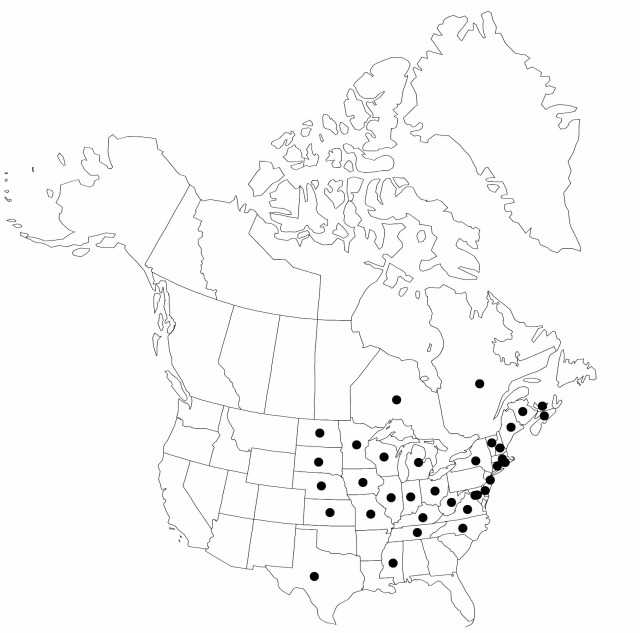Carex stricta
in J. Lamarck et al., Encycl. 3: 387. 1792.
Plants cespitose; flowering from first-year shoots. Culms acutely angled, 50–150 cm, scabrous. Leaves: basal sheaths red-brown; sheaths of proximal leaves bladeless, scabrous, fronts with red-brown spots, prominently ladder-fibrillose, apex red-brown, U-shaped, occasionally thickened; blades 4–6 mm wide. Inflorescences: proximal bract shorter than or subequal to inflorescence, 3–4.5 mm wide. Spikes erect; staminate 2(–3); pistillate 3–4; proximal pistillate spike 1.6–10.8 cm × 3–5 mm, base cuneate or attenuate. Pistillate scales red-brown, shorter than perigynia, apex acute, awnless. Perigynia ascending, pale brown, occasionally with red-brown spots on apical 1/2, 0–5-veined on each face, somewhat flattened, loosely enclosing achenes, ovoid, 1.7–3.4 × 0.8–1.8 mm, dull, apex acute or obtuse, papillose; beak thickened, 0.1–0.2 mm. Achenes not constricted, dull. 2n = 66, 68.
Phenology: Fruiting May–Jun.
Habitat: Marshes, bogs, wet meadows, shores
Elevation: 0–1600 m
Distribution

N.B., N.S., Ont., P.E.I., Que., Conn., Del., D.C., Ill., Ind., Iowa, Kans., Ky., Maine, Md., Mass., Mich., Minn., Miss., Mo., Nebr., N.H., N.J., N.Y., N.C., N.Dak., Ohio, R.I., S.Dak., Tenn., Tex., Vt., Va., W.Va., Wis.
Discussion
Although no specimens are known from Arkansas, Georgia, or South Carolina, Carex stricta may be expected there.
This may be the most common wetland sedge in eastern North America, often called tussock sedge for the distinctive large clumps that form in seasonally flooded sites. Plants in drier sites often have a more rhizomatous growth form.
Carex stricta is morphologically variable throughout its range in degree of scabrosity and color of the proximal sheaths, perigynium shape, and length of the inflorescence bract. Coastal populations south of Massachusetts usually lack epidermal papillae but are not otherwise distinguishable from plants from other regions.
Carex stricta is frequently confused with C. haydenii; they are similar in their size, growth form, and inflorescence dimensions; Carex stricta can be distinguished by the veined, flattened ovoid perigynia with short scales. This species has been reported to hybridize with C. aquatilis and has been observed to form hybrids with C. nigra.